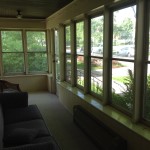Have you ever had one of those days where you wake up feeling like you could conquer the world and go to bed feeling like the world conquered you? Friday was one of those days for me.
It was one of those rare, Midwest gift days in August where you wake up and open the windows because the humidity has finally dissipated long enough to turn the A/C off for a day or so.. On days like these, there’s no wrong thing to wear. Whether long sleeves or tank top, you are neither too cold nor too hot because the sun shines brightly, complimented by a crisp, clean breeze.
It was also my first free day with no plans in awhile and felt like the perfect day to get really serious about potty-training my 2-year-old, with my oldest daughter back in school As soon as I put minnie mouse underwear on her, she immediately ran to the potty and knew just what to do (though she forgot a minor detail that required some clean up– pulling her pants down– but close enough!) She then asked to go to Starbucks to get vanilla milk and I thought that would be a good reward (yes, my 2-year-old is a Starbucks fanatic, thanks to her dad!).
Before we left, I saw a facebook message pop up on my phone that said a good friend of mine had tagged doublevision blog and wrote how I inspire her. And then I saw an e-mail come in from another friend who clicked on her link and read our blog. She sent me an encouraging e-mail, saying how brave she thinks I am and how she related specifically to a certain post.
So I left on the 2-block walk to Starbucks in this perfect weather feeling on top of the world. Everyone I passed seemed to smile or greet us with happy conversation. Even the birds were attempting to join in the casual conversations. And a bagpiper played beautiful music in front of Starbucks to help raise money for firefighters’ families (seriously, what is it about bagpipes that always gives me goosebumps?!)
I sat on a nearby bench and listened while sipping passion tea and watching my toddler happily slurp down vanilla milk in her stroller. I watched as car after car stopped to hand firefighters dollar bills, showing no sign of a recession anywhere nearby..
As I walked home, I felt like everything was right in the world. I felt good that I had handed a donation to the firefighters. I was elated that little Elli was still dry. I felt inspiring and brave and proud.
And what’s that they say about pride always proceeding the fall?
The day turned on me like over-ripened fruit. Elli peed on our new rug 2 minutes after getting off her empty potty chair. I opened July’s electric bill. Two small foreshadowings of the havoc to come.
I picked my first-grader up from school and asked if she wanted to walk to the shoe store for new school shoes. She was excited and jumped in the wagon, but Elli cried for the stroller so I caved and decided to do the “faux double stroller” with Lucy on top of the stroller (as shown in “Mama on the Move“) As we approached the shoe store, I remembered that we hadn’t brought socks to try on the shoes, and not wanting to spend extra money on socks at the shoe store, I decided to walk the 2 blocks back to grab them from home. Since a friend called to say she was stopping by in a half hour, I began walking quickly, wanting to make sure that we had enough time at the store. I usually try to go slowly when I’m pushing the girls “double-decker” style and hold on to Lucy while pushing, but I was in one of those hurried semi-frenzies as we crossed the street to our block. I was trying to get across the street quickly since there was a car waiting (and I had recently been told by my sister that I’m kind of a slowpoke crossing the street when cars are waiting!) In my haste, I misjudged the distance between the curb and front wheel, and felt the stroller jerk back in protest. And as if in slow motion, my precious Lucy went flying off the stroller headfirst onto the cement sidewalk.
Immediately, people surrounded us and a man ran for ice. Lucy stood up right away but began running hysterically in circles, shrieking in pain. I caught her in my arms and just cradled her, repeating “baby, I’m so sorry” over and over, vaguely aware of Elli staring at us from her stroller, wide-eyed and onlookers shuffling around awkwardly, trying to figure out how to help. The people from the waiting car had kindly pulled over and were looking at her pupils and trying to reassure me with the fact that Lucy has rolled, shoulder first and hit her cheek, not landing head-on. A bruise had already started to form, and Lucy continued to bawl and shriek.
I think the woman from the car could tell that I was mortified and ashamed because she began telling me how her niece did the same thing a few days before. I nodded politely but I couldn’t let myself be comforted. What kind of mom was I?
I felt this ball of guilt and regret in the pit of my stomach. And I felt not one bit inspirational. And not brave in the least. And as I pushed the stroller home, Lucy walking close and whimpering at my side, I felt like nothing in the world was right.















